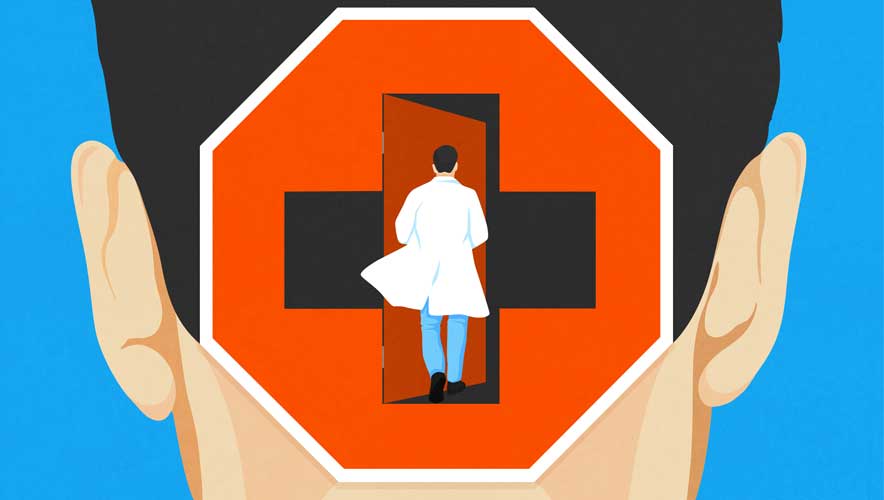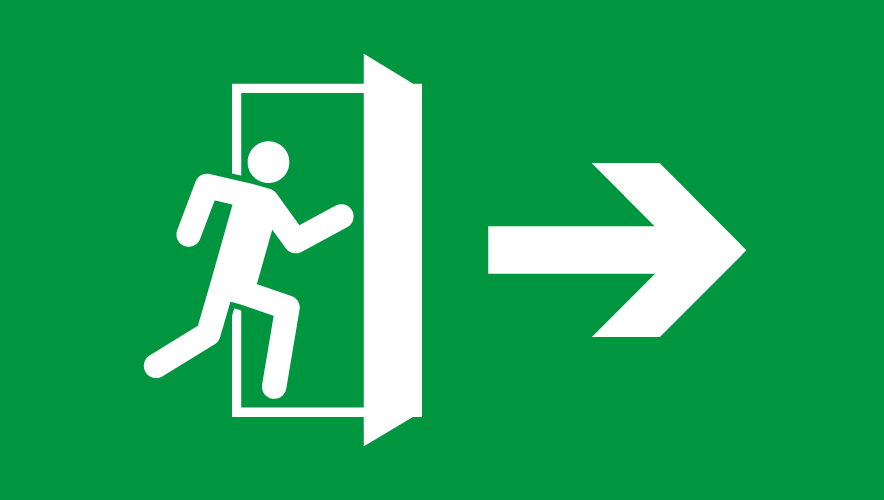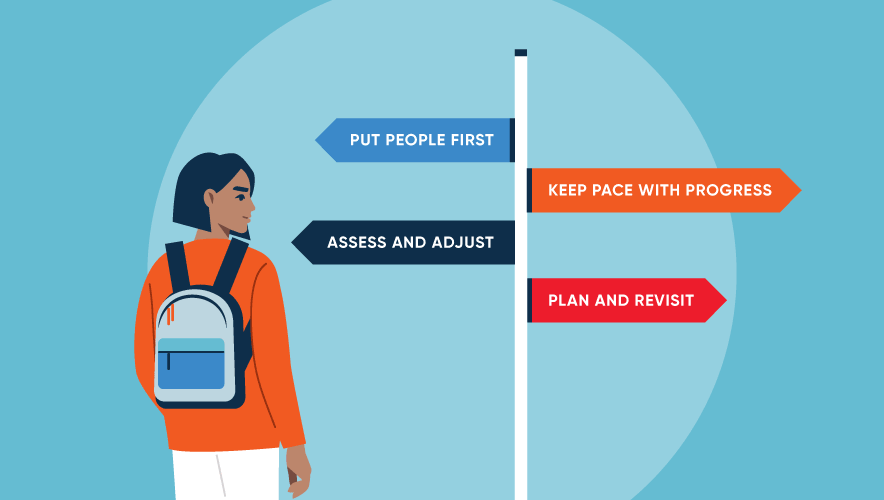A Record of Violence: Protecting Healthcare Staff with Data
While San Diego's unofficial slogan is "74 and sunny," Elizabeth Billberry, CPP, director of security services and parking transportation for University of California San Diego (UCSD) Health Systems, knows that a bright and pleasant façade can belie a complicated atmosphere. In such environments—including healthcare facilities, where nursing and hospital staff tend to brush off workplace violence incidents, treating them as the status quo instead of reporting them—success and safety demand not only data collection but also dissemination.
When the UCSD Health System's Threat Assessment and Management Committee reviewed workplace incidents that had occurred, they spotted an opportunity for improving identification and communication of security risks from returning patients.
According to Billberry, the committee realized that there were multiple incidents where an admitted patient would assault an employee; the patient would return a couple of days later, perhaps admitted to the emergency department, and assault another staffer. "Rightfully so, staff were upset that we…knew this person had a history of [violence] but there was no real way to communicate that past behavior," Billberry says.
And the concept of the nursing staff at UCSD as a target for workplace violence is not an anomaly. According to a 2002 World Health Organization report, Workplace violence in the health sector: Synthesis report, "Violence is common to such an extent among workers who have direct contact with people in distress, that it may be considered an inevitable part of the job.... While ambulance staff are reported to be at greatest risk, nurses are three times more likely on average to experience violence in the workplace than other occupational groups."
In the United States, that trend seems to have increased. The U.S. Department of Labor's Occupational Safety and Health Administration (OSHA) found that between 2002 and 2013, serious workplace violence incidents where the injured employee needed days off from work to recuperate were an average of four times more likely to occur in healthcare than in private industry. In 2013, healthcare and social assistance sectors reported serious workplace violence incidents over three times more often than construction, manufacturing, and retail.
According to OSHA, 80 percent of serious worker injuries were inflicted by a patient, 12 percent from "other client or customer," 3 percent by a student, 3 percent by a coworker, 1 percent by "other person," and 1 percent by an assailant, suspect, or inmate.
Even though the agency also estimated that U.S. workers' compensation losses add up to an annual cost of $2 billion for hospitals, workplace violence events are vastly underreported in the healthcare sector. Data collected by the U.S. Labor Department relied heavily on reported time away from work, and surveys identified that many incidents went unreported, even at sites with formal reporting systems.
Healthcare workers, committed to the ideology of "do no harm," operate within a unique culture linked to the prevalence of either underreporting or efforts to take violent incidents in stride, as if they are part of the job. An unwillingness to report is especially likely to occur in interactions with patients who unintentionally cause injuries, or with individuals with an illness or impairment that staff do not want to condemn.
The UCSD security team found that hospital staff were reluctant to report incidents because of that culture.
"They're nurses. They're trained to care for people. They're busy. So, oftentimes if they are assaulted, they just think that it's part of the job, and they just keep going," Billberry says. "We've told them that it's not part of your job to be assaulted, you didn't come to work to be assaulted, and you need to report it."
UCSD's efforts to improve reporting of workplace violence and other security risks presented by patients immediately increased incident stats, but Billberry sees that increase as a sign of success and a shift in their staff's willingness to report issues.
Beyond generating additional documentation to help address past issues, it was these reports that proved vital for transforming the facilities' medical records software into a security alert that would warn hospital and nursing staff in the future.
"Prior to this, we didn't have a system to share this information," Billberry says. "We were relying on word of mouth from one nurse to another." Unfortunately, the anecdotal method was not the most reliable one for the hospitals. "That was hit or miss as to whether that information was passed along," Billberry adds.
"The only place that was consistent was the electronic medical records," she says. And because of that consistency, the hospital system decided to try to find the most appropriate way to use the electronic medical records to provide timely communication.
Although the staff could have added the information to patients' electronic medical records, there was no specific place for such flags other than in the general notes section, Billberry explains. The challenge with that solution is volume—clinicians add so many notes throughout a patient's stay that sifting through them all to find a safety alert would take time that clinicians don't always have.
"The problem with the flag is that it gets buried amongst other flags," Billberry says. For example, a single patient might have multiple flags for allergies or fall risks, so it's easy to miss one like a security flag. So, the UCSD hospitals teamed up with their medical records software developer, Epic Systems, for a more attention-grabbing solution.
Now, when a patient has a history of violence or presents the potential for violence or other security concerns, a Staff Safety Alert can be generated in their medical records. The software, Epic, is used by hospital facilities worldwide, and it is popular with several large medical institutions because of the customization and wide variety of tools it offers beyond just medical records.
For the UCSD hospitals, the reformatted software gives medical professionals and hospital staff an early warning about potentially risky patients, as the Staff Safety Alert function warns employees prior to allowing them to access patient information. On top of maintaining a record of potential security risks, the UCSD facilities further attempted to ensure staff safety with their hard stop alert.
"Essentially, when a clinician logs into a patient's chart, if the patient presents a known security or liability risk, an alert pops up in large letters, framed like a red traffic stop sign," Billberry explains. The alert includes a form, explaining the Situation, Background, Assessment, and Recommendation (SBAR), which the staffer must acknowledge to access the medical records. And even after the employee acknowledges the initial alert and has moved on to review patient information, part of the alert remains on the screen to remind the staffer of potential risks.
The alert's application of SBAR immediately provides staff with the relevant information about a patient, telling them whether they need to enter a room accompanied by security or to implement other preventative measures. "It's not just about telling them; it's actually giving them tools on how to address and interact with this particular patient," Billberry adds.
The alert program is currently available to the health system's facilities that treat inpatients. Although UCSD clinics do not have this tool yet, Billberry's team is working with their Epic liaisons to build a bridge to other health system facilities. This push to broaden the Staff Safety Alert is due to the fact that many inpatients receive follow-up care as clinic outpatients. "We wanted to share that information with the outpatient clinics so that they are aware that this patient has a potential for violence, and here are some tools on how you can interact with them," Billberry says.
 Another benefit to including outpatient clinics would be a reciprocal flow of information. "We want to expand it to the outpatient environment so the continuity of the information goes full circle," Billberry says. She hopes that staff will update any security concerns for new and existing patients, leading to real-time reporting.
Another benefit to including outpatient clinics would be a reciprocal flow of information. "We want to expand it to the outpatient environment so the continuity of the information goes full circle," Billberry says. She hopes that staff will update any security concerns for new and existing patients, leading to real-time reporting.
With real-time reports, Billberry says the hospitals and their security teams could be aware of the number of patients with a Staff Safety Alert within the facility at any given time, eliminating reliance on the nursing and care staff. "We would like to be proactive and have the systems give us an automated report at the start of the shift. The agents who are patrolling will know exactly where these patients are located, and then they can focus their rounding more in those areas. It's another way to improve, using the information to improve our response," she continues.
And because patients can travel from one hospital to another for a variety of reasons, keeping the system connected to the different facilities assists in maintaining the continuity of information, allowing it to flow back and forth seamlessly. Even in instances where patients try to "doctor shop"—visiting multiple physicians to try to obtain more prescriptions or drugs—the information on the patient is consistent, and security and staff are made aware of those intentions, Billberry says.
Although only clinicians can access the medical records, other hospital employees also interact with patients, including food and nutrition specialists, phlebotomists, housekeeping, and radiology technicians. Naturally, the hospitals' security team wanted to protect them, too, while protecting the privacy of patients' records.
So, when a Staff Safety Alert is applied to a patient, for as long as they are admitted, the outside of their door has a "Safety Door Sign" hanging off it. "It's essentially a sign that's placed on the door—it's a big, green triangle with an exclamation mark—that indicates to the staff we want you to pause and check in with the charge or primary nurse for this patient to get instructions on how to proceed.... That sign alone will make them stop, and, unless it's an emergency, they really should be checking in and getting information," Billberry says. She adds that, for example, this can save someone delivering food or cleaning the room from being accosted by a patient with a history of throwing their food trays or urinal.
Billberry adds that the alert system has been well-received by staff, proving effective in communicating safety issues from specific patients. Beyond appreciating the notification and that the security team is not sending them into a room unaware of a potential security risk, Billberry says that "they feel more confident in terms of how to respond to this kind of behavior."
Sara Mosqueda is assistant editor at Security Management. Contact her at [email protected]. Connect with her on LinkedIn.












